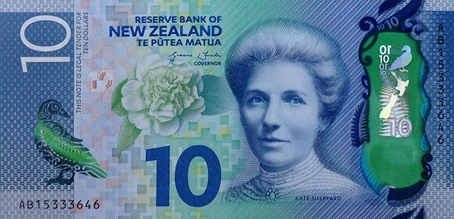Op-Ed by Chris Leitch – leader of the Social Credit Party.
One could be forgiven for thinking that the last few members of the Flat Earth Society had infiltrated the New Zealand Initiative, which is a pity because not all the Initiative’s ideas are bad.
I disagree with their slavish adherence to the notion that the neo-liberal trickle-down economic view still has some merit. The results after nearly forty years of it surely tell us all we need to know about its validity.
Inequality not seen for a couple of centuries and a transfer of wealth to those at the top of the economic heap not seen in a similar timeframe are the outcomes.
As Winston famously said (Churchill not Peters) “No matter how beautiful the strategy, you should occasionally look at the results “.
The Initiative’s Bryce Wilkinson was right (NZ Herald May 29th) to suggest that the higher welfare payments announced in the Budget, without programmes to try to deal with the long term issues that cause many to be on a benefit, are not the best investment of taxpayer dollars.
Not all government spending should be measured by a ‘return on investment’ business model however. Mr Wilkinson demonstrates that with his comments on spending on police, justice, and defence.
But it’s a pity he didn’t restrict all his commentary to those issues.
Unfortunately he couldn’t help himself from diving off, in the last few paragraphs, into flat earth notions.
Having written, somewhat sarcastically, “And is not Central Bank credit creation a fine thing”, he then advances the proposition that the Reserve Bank is not creating credit at all but is borrowing from the banking system (the commercial banks).
Not so, according to Reserve Bank Deputy Governor Christian Hawkesby, who, when asked on TVNZ’s Seven Sharp programme on April 30th last year where the bank was getting the money the buy government bonds on the secondary market, quite openly said “We’re creating electronic money to buy government bonds”. “Through this process we create money.” “Twenty years ago this would have been considered unconventional monetary policy”. “Now, with Covid-19, effectively every developed country around the world is undertaking this sort of practice”.
This was confirmed by the Bank’s Chief Economist Yuong Ha in the NZ Herald on August 14th – “We create money … which is what central banks do, and have always done, but we then exchange it for assets [government bonds] and those sit on our balance sheet.”
No suggestion there of borrowing – from anybody.
For those who are unaware, the Bank is currently creating up to $100 billion in electronic money – no small bikkies in any economist’s language.
So who is right, Mr Wilkinson or the Reserve Bank?
My money is on the Bank, and on the other central banks around the world whose literature confirms that Hawkesby, Ha, (and me) are correct.
To then go on and suggest that “if the government defaulted on those (fictitious) borrowings the banks would be bankrupted and borrowers would be much poorer” is way off even the flat earth scale.
He appears to believe that the commercial banks lend money people deposit with them.
Given that the text books used to teach economics in our universities still contain that long ago disproved fallacy I guess he could be forgiven for believing it.
Were his suggestion correct, it would be interesting to know how he thinks the banks decide whose accounts to take the money out of to lend to borrowers.
The Bank of England quite clearly states in its publication ‘ Money creation in the modern economy’ that banks create the (digital) money they lend. It is not money people have deposited with them.
That view is echoed by the German Central Bank, the Bank of Canada, rating agency Standard and Poor’s, and our own Reserve Bank, to name just a few.
So if the Reserve Bank creates the money with which it is purchasing government bonds (IOU’s), and that is what the Bank says it does, then to whom is that government debt (the IOU’s) owed?
Jim Bolger, the former Prime Minister Mr Wilkinson alludes to, was a down-to-earth farmer, not a fancy economist. He knows B…S… when he sees it.
He had it right when he said on Radio NZ on July 15th last year. “…..billions of dollars here in New Zealand that were just created by the Reserve Bank. We have to decide whether to follow traditional economics and pay that off over the next 20 years by austerity politics or we actually say we owe it to nobody – we created it, the Reserve Bank has created it, and we write most of it off.”
Bulls-eye farmer Jim!
Mr Wilkinson contends that fiscal prudence remains a virtue. I agree that spending willy-nilly is certainly not to be recommended.
Taxpayers expect their money to be going into desperately needed investment in hospitals, schools, public housing and infrastructure.
Is he really suggesting that money taken from taxpayers should be used by the government to pay back the debt it owes to itself, which its own bank purchased using money created out of nothing, rather than being spent on services that benefit the community?
Flat Earthers, along with the rest of us, would surely agree that would be silly.








